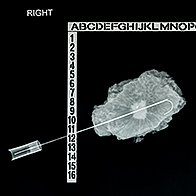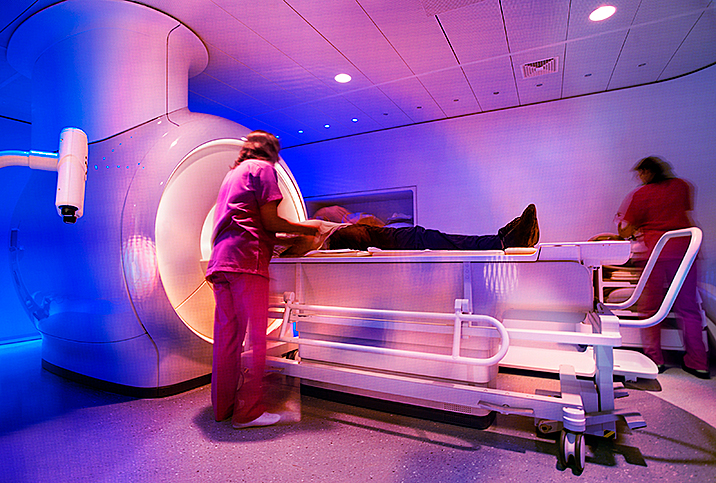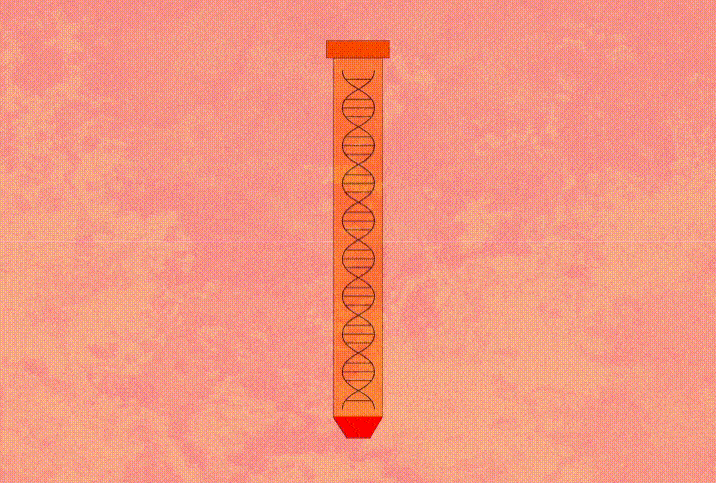There's More to Your Prostate Exam Than You Might Think

When most guys think about a prostate exam, at least their first one, what usually comes to mind is one jokey, adolescent concern: The doctor's going to stick a finger in your butt.
However, there's more going on with prostate exams than a brief, if awkward, digital exploration of the prostate, a muscular gland about the size of a walnut located beneath a man's bladder. The prostate surrounds the urethra, and its main job is to produce seminal fluid, which is mixed with sperm before being ejaculated through the penis.
To promote prostate health, many pharmacists and naturopathic physicians recommend several natural compounds to keep your prostate healthy. If a supplement is your preferred method, especially one that combines multiple prostate-friendly herbs in one capsule, Prostate Health vitamins from Giddy Health are for you. Utilizing saw palmetto, stinging nettle and pygeum, this supplement is formulated to manage prostate size and maintain a healthy urinary flow.
Several tests can help determine the overall health of the prostate. To alleviate concerns, here's a breakdown of the various types of prostate exams, what they're for and what they can tell you and your clinician about your health.
The digital rectal exam
Sean Stewart discusses the importance of regular checkups, including screening for prostate cancer. Watch the full interview here.
The reason one type of prostate exam—the digital rectal exam, or DRE—is performed with a finger in the rectum is because the prostate is palpable through the front wall of the rectum. The best known of the prostate exams, the DRE has long been the first line of defense in battling prostate disease. By pressing a finger against the front wall of your rectum and moving it gently in a circular motion, your clinician can feel the lobes and grooves of the prostate gland.
This allows them to gauge several characteristics of the prostate:
- Size
- Shape (e.g., any unusual growths)
- Density (i.e., hard spots that could indicate cancer or soft spots that could indicate other conditions)
Additionally, they may be able to identify a mass or lump in the rectum or anus.
"[The DRE] allows the examiner to determine if the prostate has a hard nodule suspicious for cancer, is tender or boggy, which would be concerning for infection or inflammation from prostatitis, and also get a general idea of the size of the prostate," said David Barham, M.D., a fellow in reconstructive urology at the University of California at Irvine.
But while the DRE can give a healthcare provider some general clues about prostate cancer and other prostate issues, it's just a first step and is not conclusive.
"Few if any diagnoses can be made solely on a prostate exam," Barham said. "But it does provide helpful information."
Prostate-specific antigen test
If your doctor discovers something unusual about your prostate based on a DRE, they may recommend a prostate-specific antigen (PSA) blood test, which checks for levels of a specific protein produced by both normal and cancerous cells in the prostate. High PSA levels may indicate prostate cancer—however, it's crucial to understand this test isn't conclusive.
"It's specific for the prostate, but it's not completely specific for prostate cancer," said Jayram Krishnan, D.O., a urological oncologist whose practice is affiliated with the Cleveland Clinic. "But it's still the most widely used blood test in order to detect a risk of a patient having prostate cancer."
The prostate always produces PSA, and an elevated reading can be caused by many factors other than cancer, such as recent ejaculation, recent bicycling, an enlarged prostate or—get this—even the DRE itself.
That's why urologists exhibit more caution toward the PSA today, rather than assuming an elevated reading indicates a need for more invasive procedures.
"We strongly advise for PSA testing according to age, category, family history and genetic risk," Krishnan said. "But we've modified the guidelines, so basically there's a lot more partnership with the physician, a lot more discussion. It's not like, 'Okay, your PSA is slightly high, you're going to get a biopsy.'"
Other prostate tests
While the DRE and PSA are generally the first-line tests for prostate issues, some other tests are becoming more widely utilized, as well.
MRI
The precision with which MRI, or magnetic resonance imaging, can be used to look for prostate cancer has come a long way in recent years. Technicians often use an instrument called an endorectal coil, inserted in the man's rectum during the scan, to provide a level of accuracy that was previously unavailable.
According to a February 2021 study published in the journal JAMA Oncology that looked at more than 400 men with prostate cancer risk, 37 percent were able to avoid a biopsy because of what an MRI showed. In men whose MRIs showed cancer risk, clinicians were able to drastically reduce the number of biopsy samples needed by homing in more precisely on the troubling areas.
CTC blood test
An exciting new blood test has been demonstrated to have more than 90 percent accuracy in predicting the presence of aggressive prostate cancers. The circulating tumor cells (CTC) test was able to noninvasively predict aggressive cancers that were later proved through biopsy, according to a study published in 2019 in the Journal of Urology.
Understanding the array of tools available to navigate the possibility of prostate issues, including cancer, is crucial to getting the best possible outcome. Make sure you have all the information you need before you begin building a treatment approach with your doctor.
The main takeaway is that not every prostate test carries the same weight, and beyond that, not every prostate cancer diagnosis calls for the same treatment.
"Prostate cancer treatment is not 'free,' so to speak," Krishnan said. "There are side effects with any of the treatments. It's an entire plan you develop with your doctor."




















